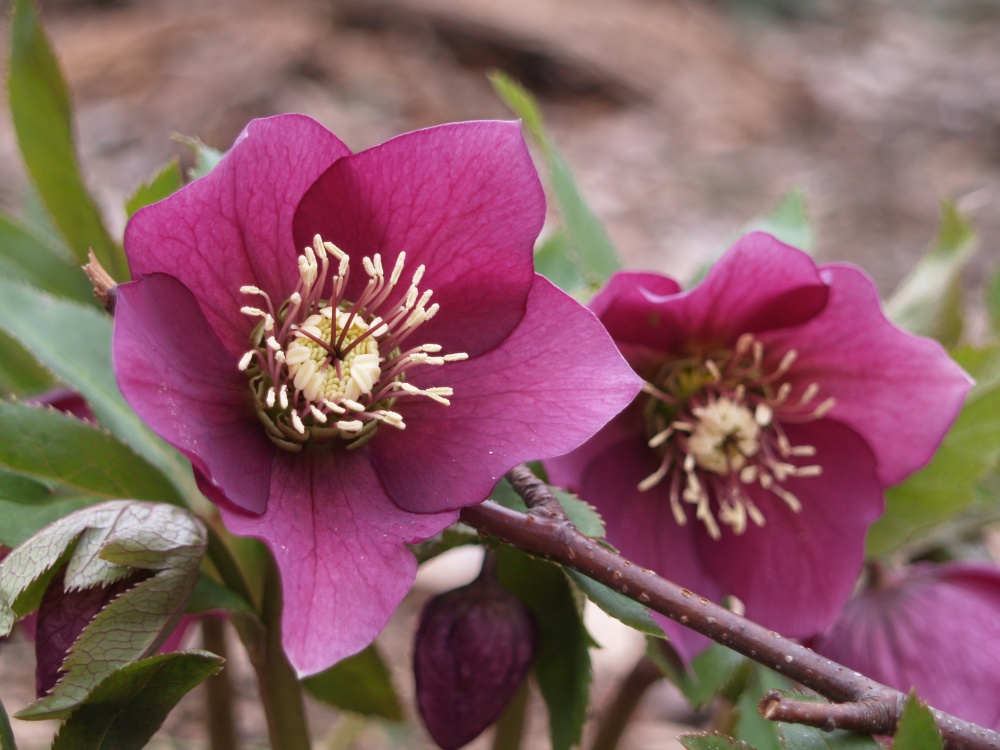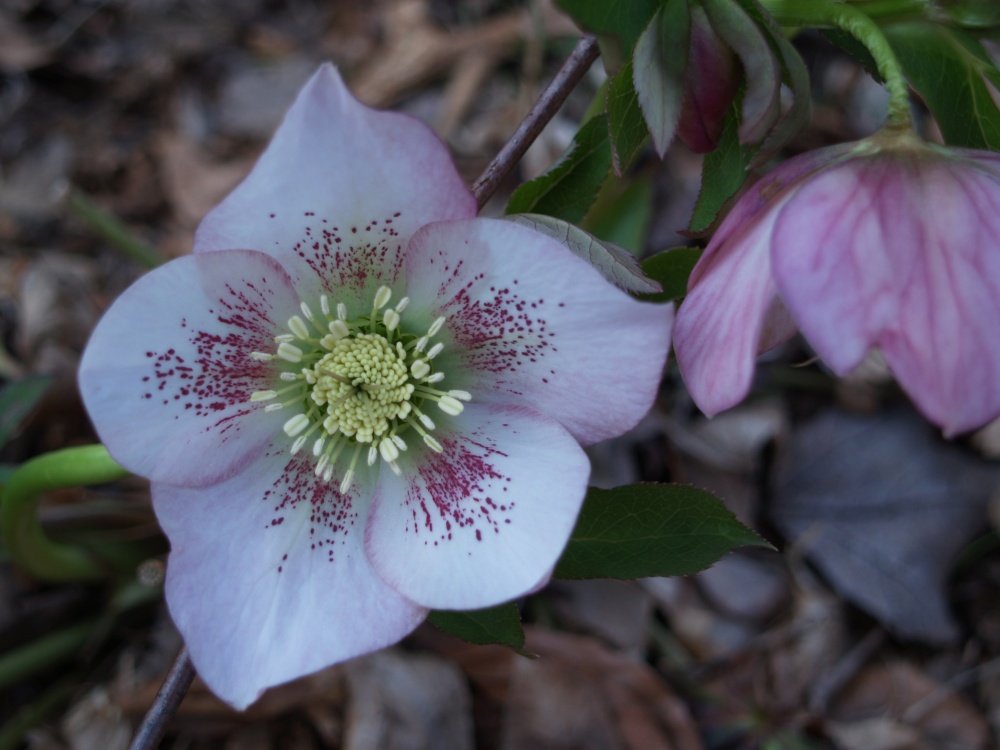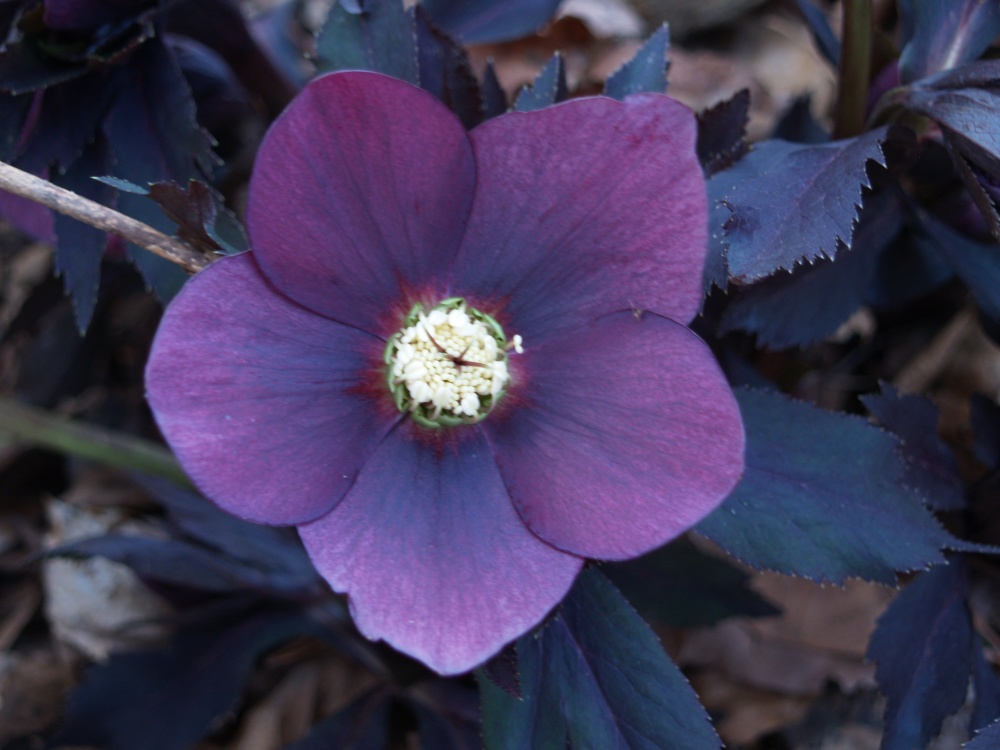 Finally, peak bloom has arrived for most of the hellebore varieties (Helleborus spp.), though there are still a few stragglers holding out. With continued spring-like temperatures I suspect that all will be flowering within days, but with this late start it will be unsurprising when they fade more quickly than is typical. Hellebores are not noted for their April flowers, though it is often noted that blooms can last into the month when they have begun flowering six or eight weeks earlier.
Finally, peak bloom has arrived for most of the hellebore varieties (Helleborus spp.), though there are still a few stragglers holding out. With continued spring-like temperatures I suspect that all will be flowering within days, but with this late start it will be unsurprising when they fade more quickly than is typical. Hellebores are not noted for their April flowers, though it is often noted that blooms can last into the month when they have begun flowering six or eight weeks earlier.
Today, there are purples, some nearly black, and others dusky with pronounced veining. Others are nearly green, yellow, and not quite white, and then there are blushes of pink. This is a mottled lot, this group of hellebores.
I understand that it would help considerably to have a full listing to identify plants as I show photographs of hellebores that are in full flower in the garden today, rather than only stating that all hellebores are splendid, and you cannot possibly go wrong no matter which varieties you select. In recent years, I’ve added a few dozen (or more) hybrids, and what once once a muddled situation has become further and hopelessly complicated, and I’m afraid I can claim knowledge to the names of only a few. Also, there are dozens of mature, flowering seedlings that are just similar enough to be indistinguishable from parent plants, and at this point I have barely a clue which I planted from ones that grew from seed.
In fact, most hellbores are vigorous growers, and it’s fair enough that your personal choice should be dictated primarily by flower color. While massing of colors might be ideal when it comes to more flagrant blooms such as rhododendrons and azaleas, there seems every reason to try at least one of every hellebore that your budget allows. Doing so permits not only a range of colors, but also a wider period of flower. It should be mentioned that many of the flowers on older varieties nod downward so that their beauty is often not so readily apparent, though to me these less expensive seedlings are every bit as pleasing as more costly hybrids with upright facing blooms.
In the course of more typical winters I’ve become accustomed to enjoying scattered hellebore blooms through February, and occasionally into January. But, in this chilly, extended winter the peak bloom has been delayed into early April. While scattering the flowers over the previous two months would have made the winter considerably more bearable, the gardener has little say in these matters, so the hellebores must be enjoyed whenever it is that they get around to flowering. And so, as it is for the usually early flowering ‘Okame’ cherry (Prunus x incam ‘Okame’) and the ‘Star’ magnolias (Magnolia stellata ‘Royal Star’), their earlier scheduled appointment has been missed and we must make do with fitting them into the next best available space.
How is the flowering of snowdrops in your garden timed in relation to the hellebores (same time or earlier, and if earlier by how much)? I planted 50 snowdrop bulbs last fall and so far no sign on them (zone 6 here). On the other hand this has generally been a late spring and my hellebores are only now beginning to emerge from the ground. So I want to know if I should give up on the snowdrops or assume they will come up in a week or two.
The first signs of snowdrops were a few weeks earlier than the hellebores, but then all were delayed by the cold of March. Typically, I expect hellebores to follow the peak bloom of snowdrops by two to three weeks. Still, as odd as this spring has been it will not be surprising for the snowdrops to suddenly appear.